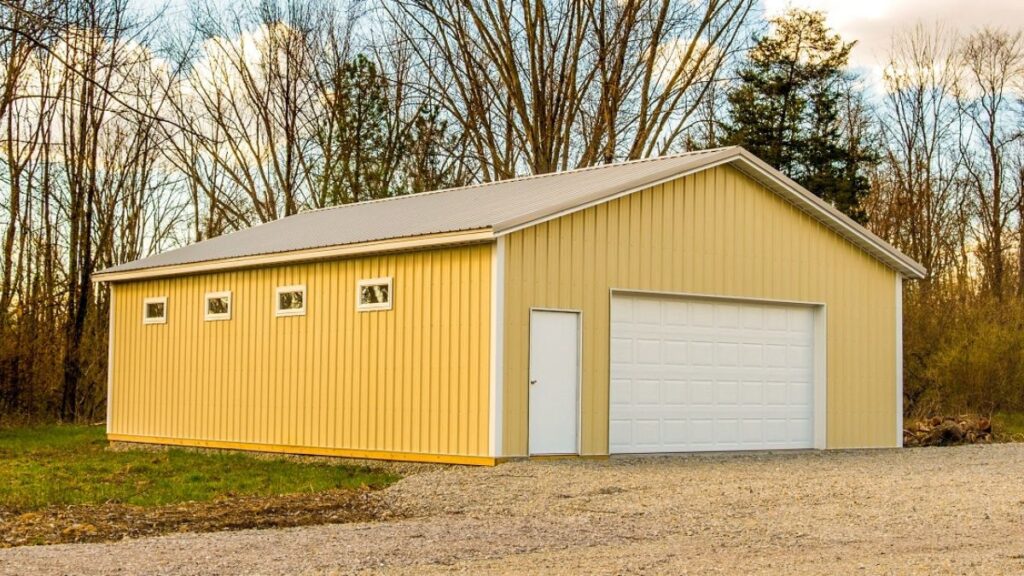Barns are more than just charming structures nestled in rural landscapes—they are functional, hardworking buildings that house livestock, protect equipment, and store valuable supplies. Whether you’re maintaining a historic wooden barn or a modern metal structure, consistent upkeep is essential to ensure longevity, safety, and efficiency. In this post, we’ll walk you through key barn maintenance tips from roof to foundation to keep your structure in top shape.
Start at the Top: Roof Maintenance
The roof serves as your barn’s primary shield against harsh weather conditions. Even minor damage can lead to costly issues like leaks, mold growth, and structural deterioration. To prevent this, make it a routine to inspect your barn’s roof at least twice a year—preferably in the spring and fall—and after any severe weather events.
During inspections, pay close attention to:
- Missing or damaged shingles or metal panels
- Loose, missing, or rusted metal roofing screws
- Signs of rust or corrosion on metal surfaces
- Areas where the roof is sagging or water is pooling
- Accumulated debris in gutters or along the roofline
Remove leaves, branches, and bird nests promptly, and address any small problems before they turn into bigger, costlier repairs. For added durability, consider applying a roof sealant or protective coating to help extend the life of your barn’s roof.
Keep Gutters and Downspouts Flowing
Proper drainage is essential to protect both the barn’s roof and its foundation. Clogged gutters and downspouts can cause water to overflow and seep into the structure, potentially damaging wood, corroding metal, or creating icy hazards in winter.
Regularly clean gutters and check that downspouts direct water away from the barn’s base. Install extensions or French drains if necessary to ensure water flows far enough from the foundation.
Walls and Siding: Keep It Sealed and Sound
Next, examine the barn’s walls. Whether your barn is constructed from wood, metal, or a combination of materials, exterior walls need protection from pests, moisture, and wear.
For wood barns:
- Look for signs of rot, warping, or termite damage
- Repaint or reseal exposed wood every few years
For metal barns:
- Watch for rust, dents, or loose panels
- Apply rust-inhibiting paint if corrosion is spotted
Ensure all seams and joints are properly sealed to prevent air and water infiltration. Clean off dirt, mildew, or bird droppings that can degrade materials over time.
Doors, Windows, and Vents: Function and Security
Properly functioning doors and windows are essential for ventilation, natural light, and security. Check that all doors open and close smoothly, hinges are well-oiled, and locks or latches work correctly. Inspect weather stripping around doors and windows to prevent drafts.
Good ventilation is crucial, especially if your barn houses animals. Clean vents and louvers regularly to remove cobwebs and dust buildup, and check that fans and air systems are in working order.
Interior Maintenance: Cleanliness and Organization
Inside the barn, cleanliness supports both safety and productivity. Sweep aisles regularly, remove clutter, and dispose of trash or unused materials. If you store feed or grain, make sure it’s kept in sealed containers to avoid attracting pests.
Inspect structural elements like beams and trusses for signs of damage or stress. If you house livestock, clean stalls, replace bedding, and disinfect surfaces regularly to prevent disease spread.
Electrical and Lighting Systems
A poorly maintained electrical system can be a serious fire risk. Check for exposed wires, flickering lights, or overloaded outlets. Make sure all wiring is housed in protective conduit, especially in areas accessible to animals.
Install proper lighting to ensure visibility during early mornings or late evenings. LED barn lights are energy-efficient and provide excellent illumination. Consider adding motion sensors or automatic timers for convenience and security.
Pest Control
Rodents, birds, and insects can wreak havoc on your barn’s structure and contents. Seal any small gaps or entry points around doors, vents, and siding. Use traps or repellents as needed, and keep food sealed and stored off the ground.
Avoid accumulating organic waste like hay dust or spilled grain, which can attract pests and contribute to fire risk. Regular cleaning is one of your best defenses.
The Foundation: Your Barn’s Base
Finally, don’t forget about what’s beneath your feet. Check the foundation for cracks, settling, or signs of water intrusion. Address any drainage issues that may be causing water to pool around the base of your barn. Proper grading and the use of gravel or concrete pads around entrances can help reduce mud and erosion.
In older barns, inspect the floor joists and support beams for rot or insect damage. Reinforce or replace as needed to maintain structural integrity.
Final Thoughts
Barn maintenance isn’t just about keeping things looking good—it’s about preserving functionality, protecting your investment, and ensuring safety for both people and animals. With a little routine attention from roof to foundation, you can keep your barn standing strong for generations to come.






